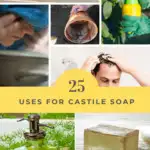
Castile soap is an entirely natural soap. Originally, the term applied to a soap made with olive oil, named for the Castile region in Spain.
But nowadays the term is often used to refer to any soap made from vegetable oils, that does not contain animal fats, or any synthetic chemicals.
One of the most famous Castile soaps is Dr Bronner’s. But there are a number of other such soaps for sale.
It comes in both solid and liquid soap form. Buying the bar soaps will allow you to cut down on plastic packaging.
You could also cut down on packaging by buying larger containers of Castile soap, to reduce the number that you have to buy.
If you do opt for the bar soap, you can make your own liquid soap simply be grating the bar into water and leaving the mix to sit for a while.
Alternatively, you can make your own castile soap from scratch. Whether you buy or make your Castile soap, you will find that it has a number of brilliant uses.
Twenty five uses for this versatile substance are included below:
Using Castile Soap in Your Cleaning & Beauty Regime
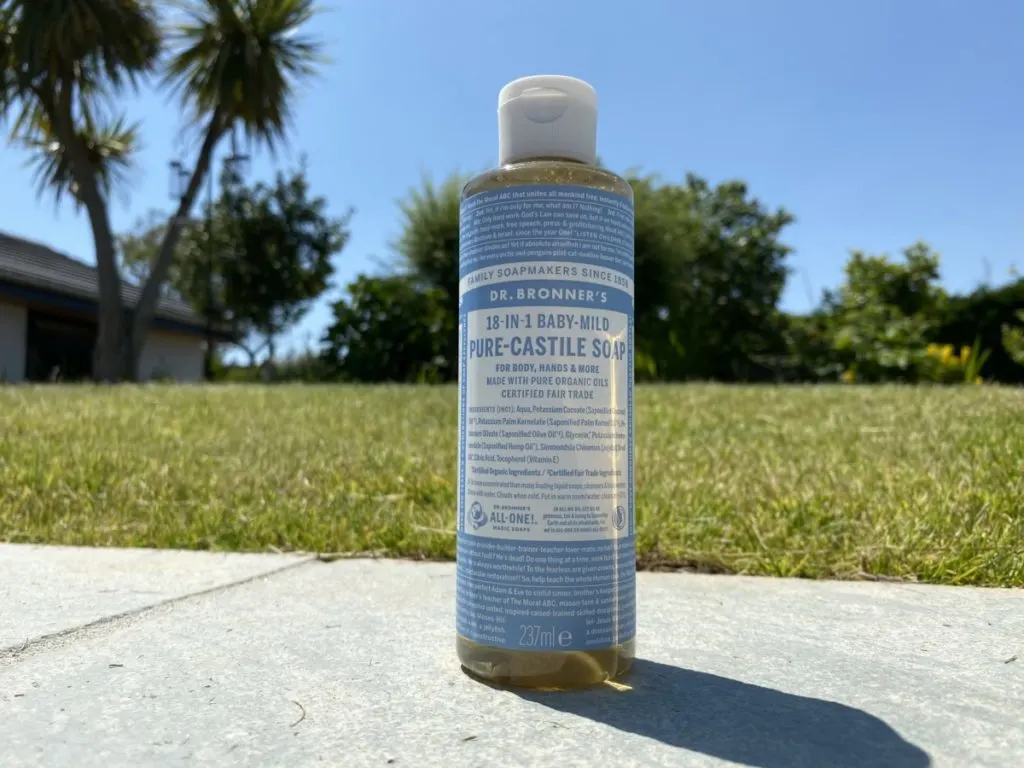
To begin with, here are some of the ways that you can incorporate Castile soap in the cleaning and beauty regime for you and your household:
1. Use Castile Soap To Wash Your Hands
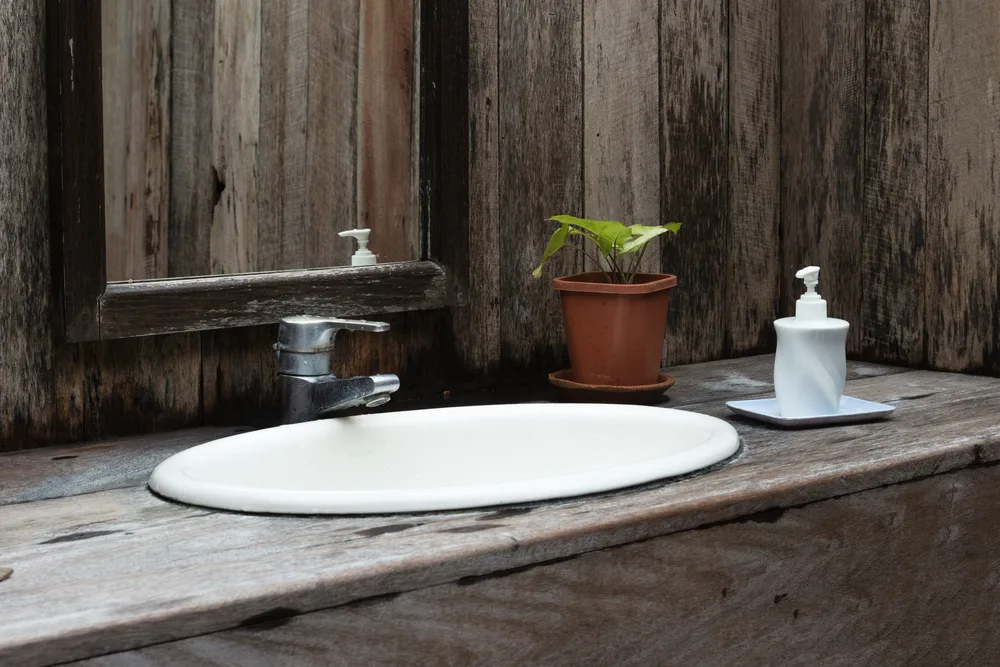
Simply add ½ cup Castile liquid soap to the same quantity of water, along with a small amount of oil (such as coconut or sweet almond oil) to moisturize, and, if you wish, essential oils for their fragrance and other beneficial properties.
You can experiment with these simple, natural ingredients until you find a liquid hand soap that is just right for your hands.
Homemade liquid hand soap with Castile @ happymoneysaver.com.
2. Use It To Help Clean Minor Wounds
Two teaspoons of Castile soap added to 2 cups of filtered water are sometimes used as a rinse to help in cleaning minor wounds.
An animal study carried out in 1999 found that Castile soap can be effective in healing wounds and lowering the incidence of any complications.
It is important to note, however, that a 2015 study showed that a saline solution works better for cleaning open fractures. So this is something to bear in mind.
3. Use Castile Soap With Essential Oils To Clear Your Sinuses
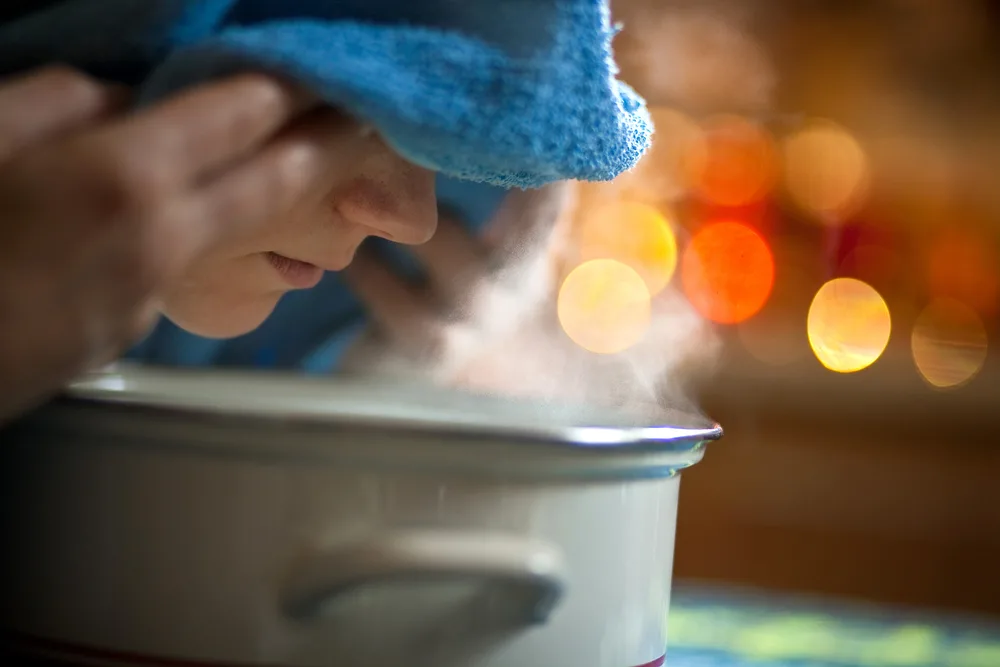
Many castile soaps on the market already contain essential oils. If you make your own, you can add your own favourite essential oil blend.
Essential oils like peppermint, eucalyptus and tea tree can help clear your sinuses. Simply add a tablespoon of the soap to a bowl of boiling water, then place a towel over your head and breathe in the steam.
This should help clear your sinuses and relieve congestion.
(Test yourself with small quantities of essential oils before using them, as some people can experience severe allergic reactions. Personally, I have an allergy to peppermint oil. Breathing it in makes me feel extremely unwell.)
4. Make a Gentle, Natural Face Wash
Castile soap can be a key ingredient in a number of different natural face washes. It is mild enough not to upset the more delicate skin on your face, yet also potent enough as an antibacterial to kill harmful bacteria.
Using a natural face wash, such as ones including Castile soap, can help with skin blemishes and help with problems such as acne.
You can work out a solution for all different skin types using castile soap as a base and adding other natural ingredients.
A couple of examples can be found at the link below.
DIY Castile Soap Face Wash @ Bustle.com.
5. Use Castile Soap To Remove Makeup

Castile soap can also be used in a range of natural makeup removers. It can work especially when when combined with certain oils, with witch hazel or with aloe vera.
While you may not need to wear makeup at all, you might want to.
(Just remember, there are plenty of natural makeup options out there – you don’t need to rely on all the harmful shop bought options.)
If you do wear makeup, these castile soap recipes make it much easier to remove. You can find a few examples here:
Natural DIY Makeup Remover Recipes @ wellnessmama.com.
6. Make a Natural, Home-Made Body Wash
As you might have suspected, Castile soap is not only great for use on your face. You can use it on the rest of your body too.
If you are looking for an alternative to bar soap for your shower regime, why not consider mixing up your own batch of body wash or shower solution using Castile soap and a range of your other favourite natural ingredients?
You can find one recipe for a body wash here:
Homemade body wash @ DIYNatural.com.
7. Make a Bubble Bath With Castile Soap & Vegetable Glycerin
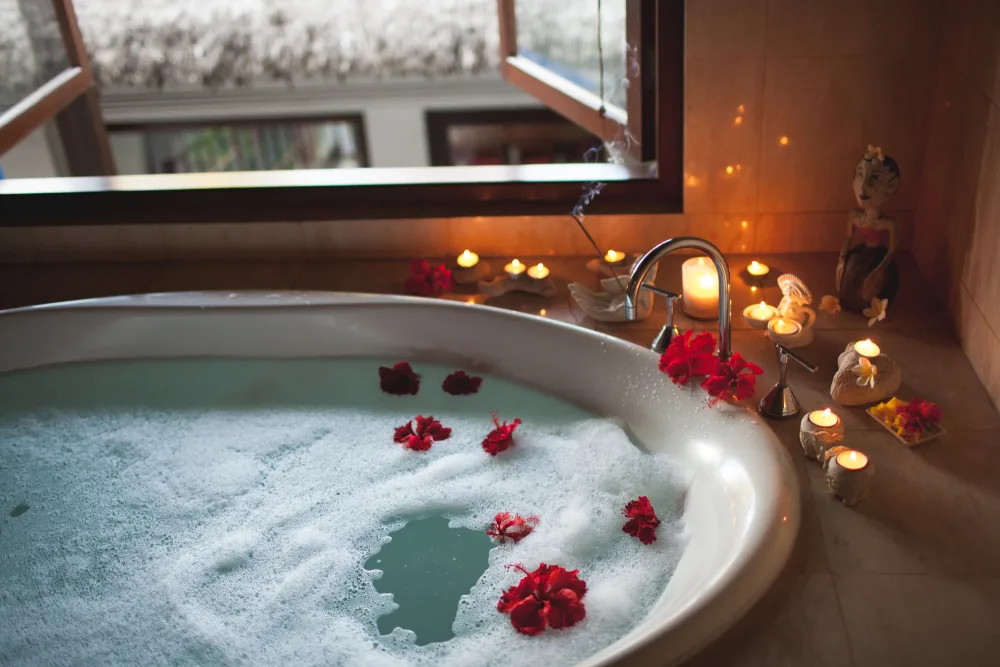
One of the downsides to a Castile soap is that it will not tend to form many bubbles when you use it.
But by adding vegetable glycerin to the mix, you can make a bubble bath that is super safe for you (and even babies and small children) to use.
Check out a natural bubble bath recipe below:
Natural Bubble Bath Recipe @ wellnessmama.com.
8. Use Castile Soap When Shaving
Castile soap can also be a key ingredient in homemade, natural shaving cream.
Making your own shaving cream will help your skin stay fresh, clean and smooth without exposing you to all the harsh and harmful chemicals that are in so many shop-bought options.
To see an example of a shaving cream recipe that uses it, check out the oil and honey combo at the link below.
Homemade Shaving Cream Recipes @ simplelifemom.com
9. Use Castile Soap for a Non-Toxic, Natural Shampoo

You can also use Castile soap, in certain situations, as part of your natural hair care regime.
Like other soaps, it is very alkaline, and can disrupt the pH balance of your hair and scalp if you do not use it correctly.
However, dilute it well, and follow it up with a conditioning rinse of something acidic like apple cider vinegar, and it can work really well for healthy, beautiful hair.
Experiment and you are sure to be able to find and stick to a natural hair care regime that works for you.
10. Enjoy a Relaxing Foot Bath
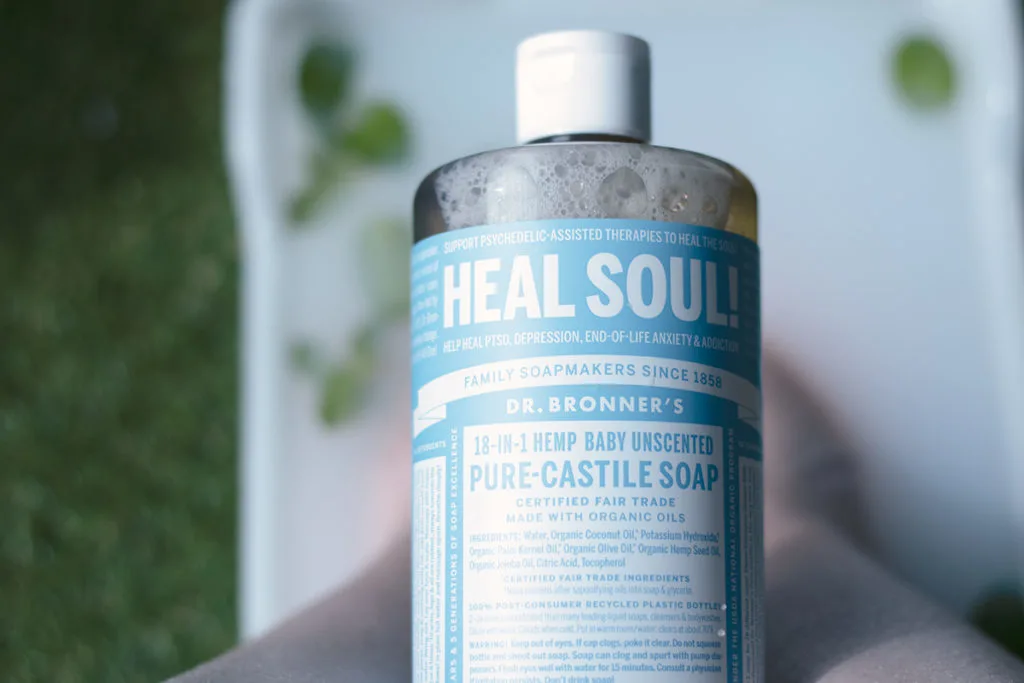
To make yourself a relaxing foot bath, simply add 2 teaspoons of liquid soap (along with a few drops of essential oil of your choosing) to a small bucket of warm water.
You can then simply sit back, unwind and let the stress of the day wash away.
11. Use Castile Soap To Clean Your Teeth
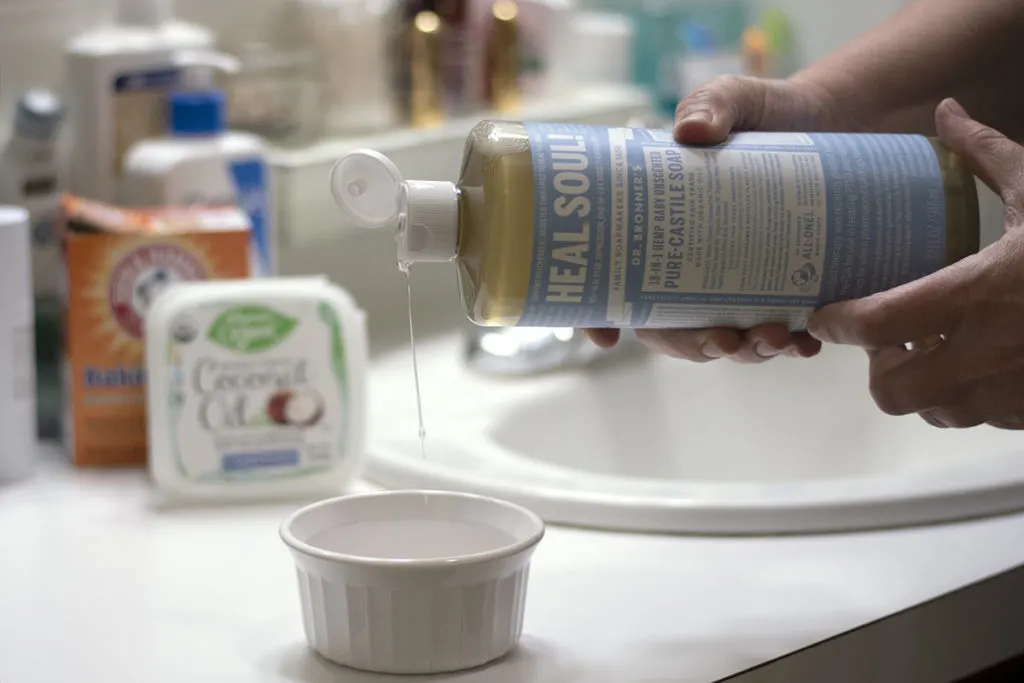
You might be astonished to learn that you can also use a small amount of Castile soap to clean your teeth. You can purchase or make a peppermint Castile soap, for example.
Then simply pop a drop on your brush and brush away, spitting it out as you would do a regular toothpaste.
Castile soap can also be incorporated into DIY toothpaste mixes.
Amongst other things, it provides a foaming action that can help a natural toothpaste feel more like the ones you buy in the store.
Beginner’s Guide to Homemade Toothpaste @ Ediblyeducated.com
12. Make a Mouth Wash/ Breath Freshener
A drop of Castile soap such as a peppermint one can also be used to make a mouth wash to use after you brush.
Simply add ½ teaspoon to a small cup of water, swill and spit.
This is an easy and quick natural alternative to all those harsher mouthwash options on the market.
13. Make an All-Natural Deodorant
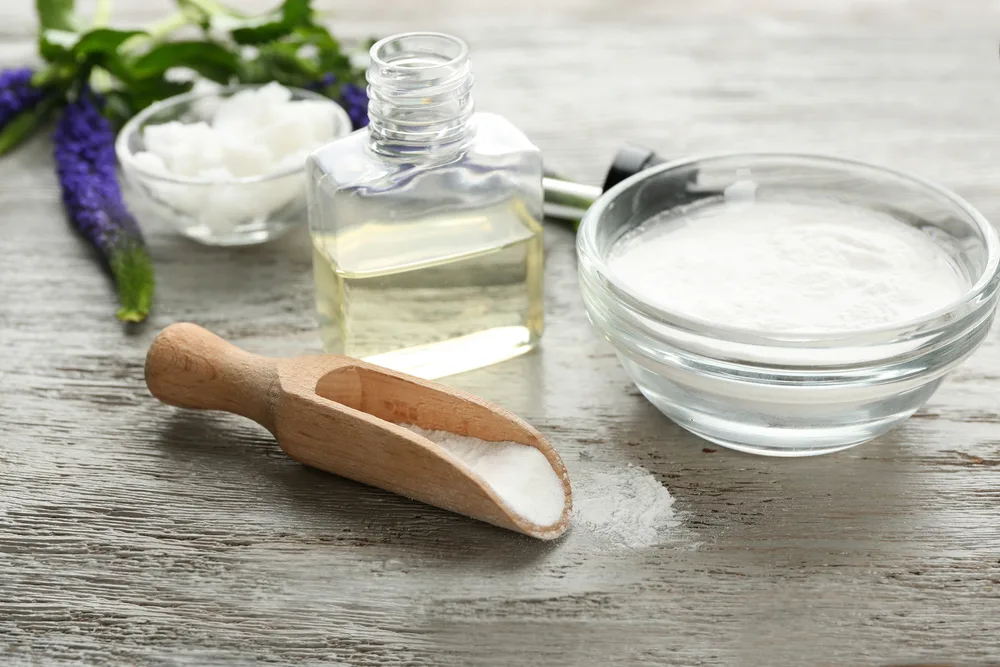
One final use for this natural soap within your cleaning and beauty regime is as an all-natural deodorant.
There are a number of natural deodorant recipes out there – some more effective than others.
Add ½ teaspoon castile soap and 1 tsp of salt to a small spray bottle, along with essential oils of your choice, and use under your arms as needed.
Or follow another more refined recipe, such as the one in the link below.
Deodorant @ Mothernaturesmaid.wordpress.com.
Using Castile Soap in Your Home
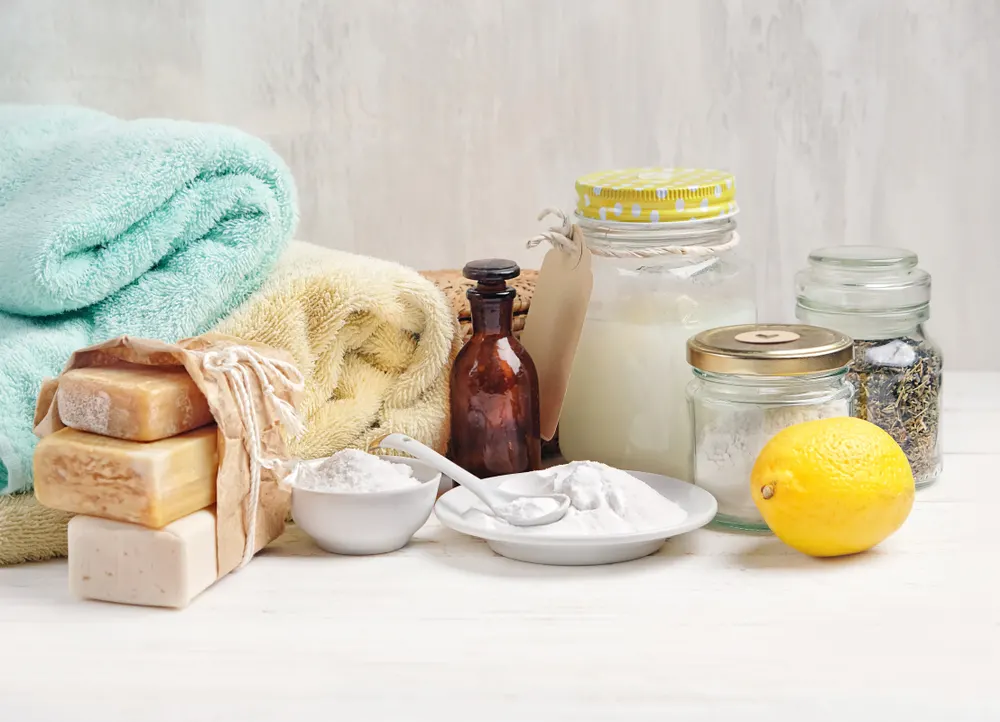
As if all those uses and recipes above were not enough, you can also use Castile soap in a wide range of other ways around your home.
Here are some more suggestions:
14. Use Castile Soap as a Multi-Functional Household Surface Cleaner
Castile soap can be used to make a multi-functional cleaning spray that can be used on a range of different surfaces in your home.
Simply add a tablespoon of unscented liquid soap to a cup of water, add whichever essential oils you would like to use, then pop it in a spray bottle and use it to clean your kitchen surfaces, bathroom surfaces, tables, work surfaces and more.
DIY Castile Soap Multi-Surface Spray @ thespruce.com.
15. Use It To Clean Your Windows
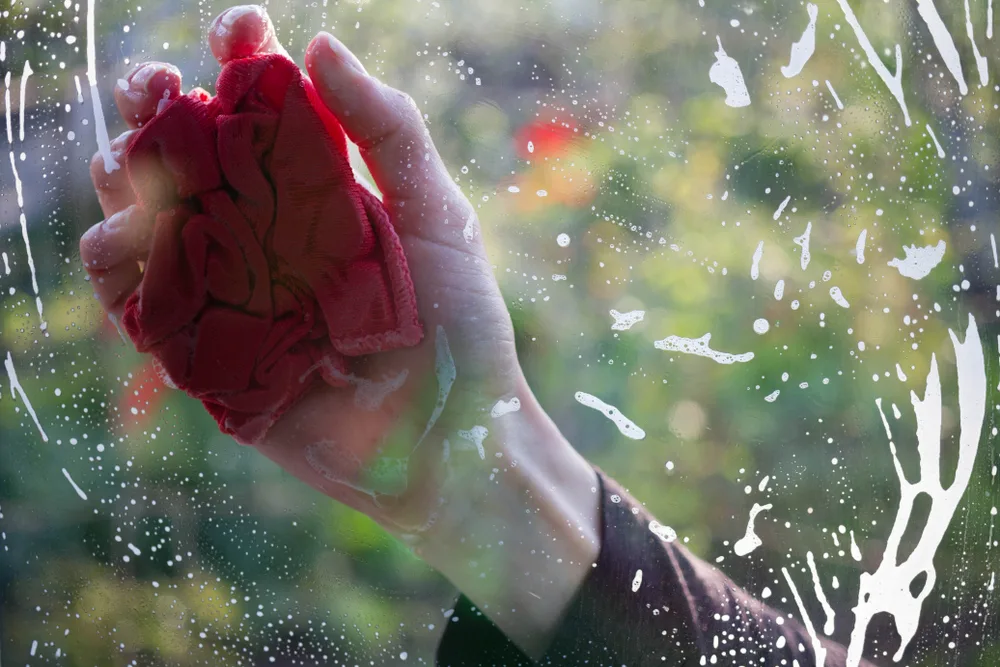
A vinegar spray is usually enough to get your windows gleaming.
But if they are particularly grubby, you can cut through the grime with a castile soap solution.
Simply add 1 tablespoon of soap to a bucket of water and then use that to clean off the grime. Rinse, then try with paper.
16. Use It To Mop Your Floors
Castile soap solution is also ideal for cleaning your floors.
Whatever kind of hard flooring you have in your home – you can use ½ cup of soap to around 3 gallons of water.
Simply mop your floors as usual to leave them fresh and gleaming.
17. Make a Scrub for Toilets and Tubs
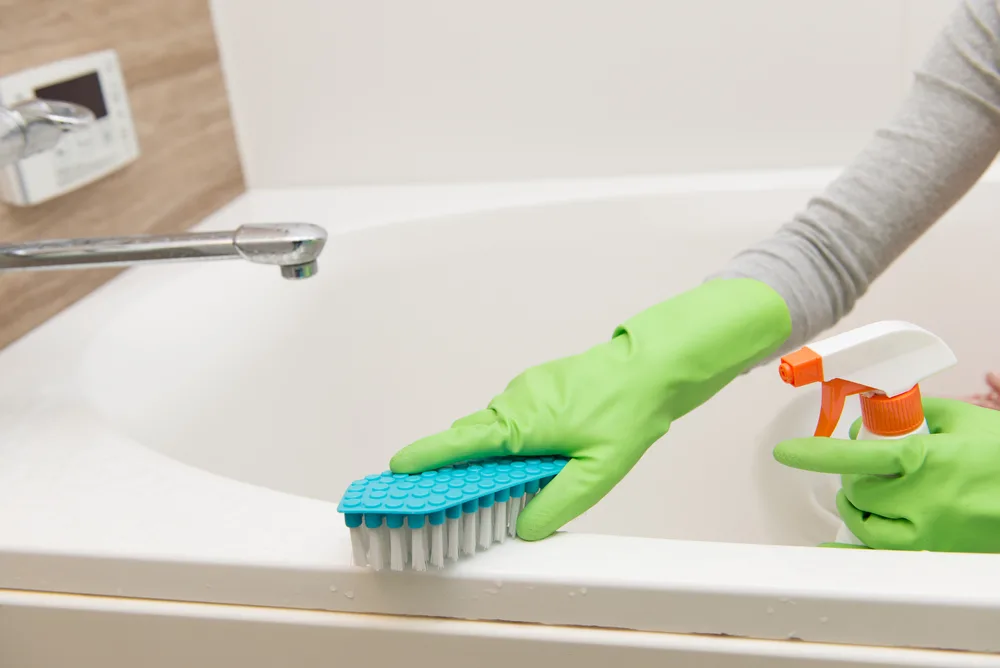
Gentle enough to clean delicate surfaces around your home, this kind of soap is also strong enough to use in toilets and tubs.
Add ¼ cup liquid soap to ¾ cup of water, 2 tbsp of baking soda and essential oils (as wanted).
Then just scrub around the toilet or bathtub to get everything clean.
Homemade Toilet Bowl Cleaner Recipe @ mymerrymessylife.com.
18. Make a Natural Dish Soap Solution
There are a lot of hand-dish-washing solutions out there that allow you to go all-natural and avoid toxins and harmful ingredients.
While combinations sometimes suggested are less than effective, one that really does work is simply to add a solution of 1 part Castile soap to 10 parts water to a wash cloth, sponge, scrub brush or natural loofah then use it to clean your dishes.
(You can also keep some baking soda on hand to scrub off stubborn stuck on food.)
19. Use Castile Soap in a Dishwasher
If you have a dishwasher, you can also use natural soap in that. Simply add around 1 cup of soap to around ¼ cup water, and lemon juice (1 tsp – optional).
Add one tablespoon of this solution to the detergent compartment of the machine.
Consider also adding vinegar to add sparkle and shine during the rinse cycle.
20. Make Your Own Laundry Detergent

Castile soap can also be used to wash your clothes. To keep your clothes fresh and clean, simply use around 1/3 cup of soap for each large load.
If you are washing something grubbier, consider adding in some baking soda too.
Especially if you have hard water, it can be a good idea to also add a cup of vinegar to the rinse cycle by placing it in the fabric softener compartment.
Green Laundry Care @ lisabronner.com.
21. Use Castile Soap To Clean Your Pets
Castile soap is totally pet-safe too. You can also use it to create a ‘shampoo’ to clean your pets.
We have dogs – and we know that they do not always smell like roses!
Mix up a simple dog washing solution with 4 cups water, 3 tbsp baking soda and ½ cup Castile soap (plus essential oils as desired).
Note: do not use tea tree – this is toxic to pets.
Dog shampoo @ marthastewart.com.
Using Castile Soap in Your Garden
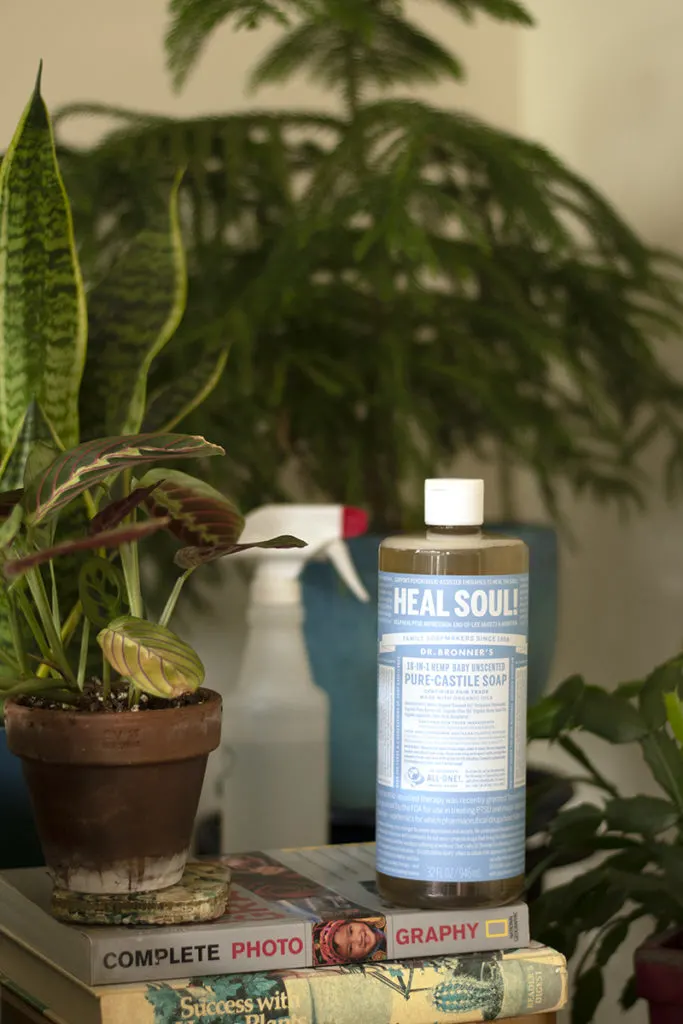
Finally, there are a few more ways that Castile soap can come in handy for gardeners.
22. Use Liquid Castile Soap in an Organic Pesticide Spray
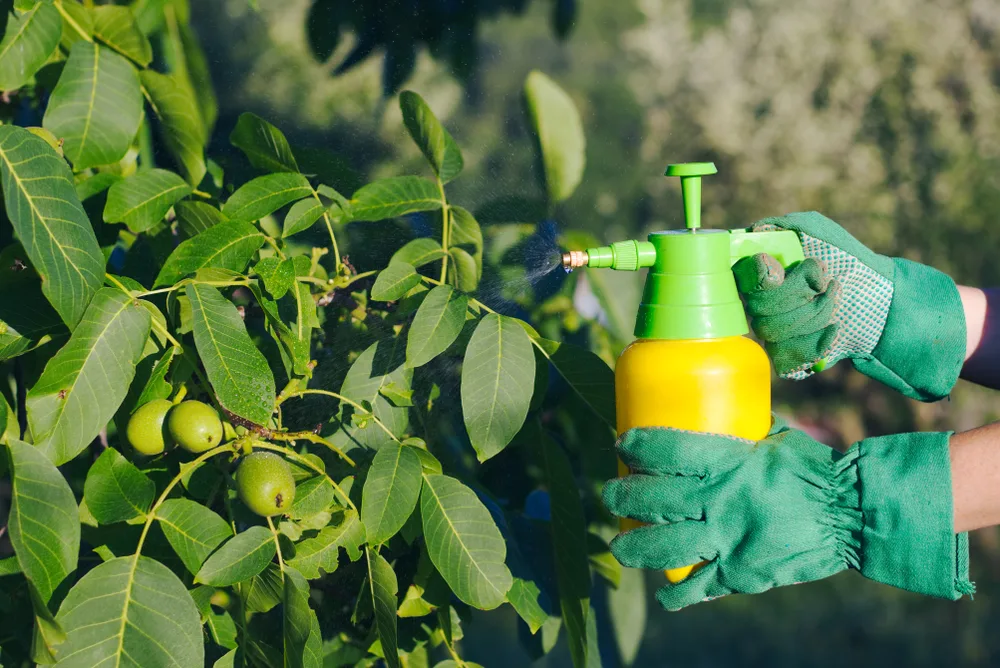
Liquid soap can be used as an organic pesticide spray as a ‘nuclear option’ for an acute and severe pest problem.
Combine the liquid soap with effective natural pesticides, such as garlic or neem oil, for example.
But remember, even natural pesticides can upset the balance in an organic garden and do more harm than good – so use such solutions sparingly if you choose to use them at all.
23. Make a Spray to Combat Powdery Mildew
In the garden, a liquid soap spray can also be used as a powerful anti-fungal.
It can be used in a solution to treat problems such as powdery mildew.
Add 1 teaspoon Castile soap to a solution of 2 gallons of water, 2 tbsp of baking soda and 5 tbsp of vegetable oil.
Mix, add to a sprayer, and spray on affected plants.
24. Use Castile Soap To Clean Pots & Garden Tools
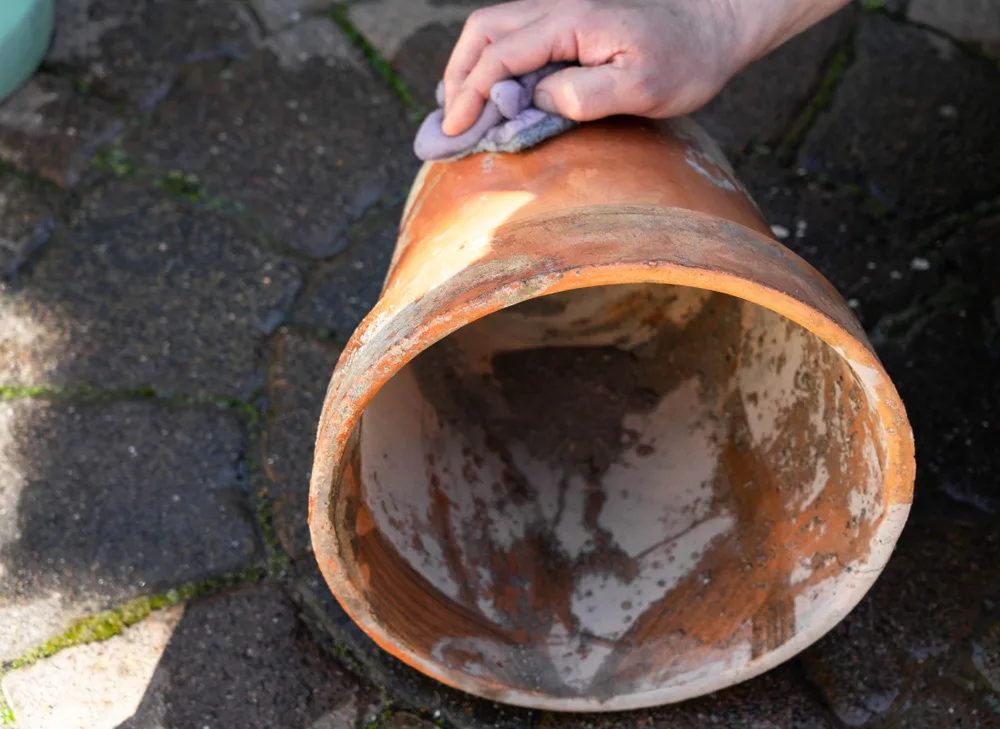
When gardening, it is important to keep pots and tools clean. Using dirty gardening equipment can make your job more difficult.
It can also spread pests and disease.
Add 3 tablespoons of soap to around a quart of water and use this solution to wipe over your tools before drying them thoroughly, and oiling where required.
Sterilize and reuse plant pots by submerging them in a vinegar and water solution, then wash your pots with Castile soap and water.
25. Use It To Wash Your Home-Grown Produce
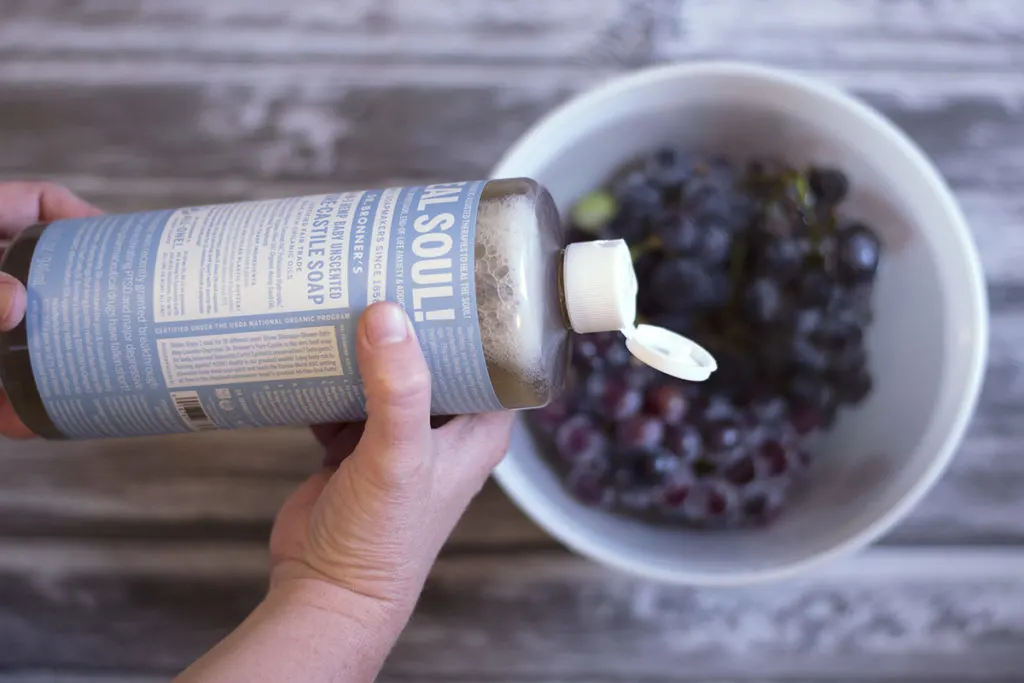
Finally, since Castile soap is so safe to use, you can even use it to wash your fresh produce. The fruits and vegetables you grow in your garden can be cleaned with a solution of 1 tbsp of soap in two cups of water.
As you can see, there are a huge range of uses for Castile soap. It can be an incredibly useful thing to make or buy for your home.

Get the famous Rural Sprout newsletter delivered to your inbox.
Including Sunday ramblings from our editor, Tracey, as well as “What’s Up Wednesday” our roundup of what’s in season and new article updates and alerts.


